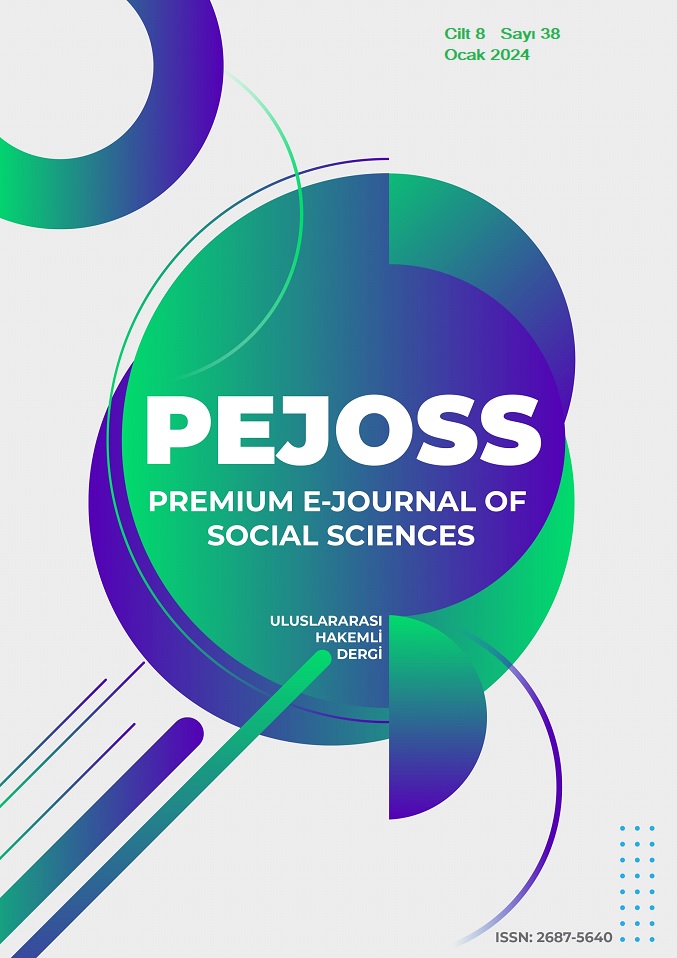Harvesting Chickpeas Manually and the Problems That Occur (Tufanbeyli Example)
DOI:
https://doi.org/10.5281/zenodo.10642761Keywords:
Chickpea, chickpea height, chickpea harvest by hand, problems, yield, labor, incomeAbstract
The aim of this study is to determine the manual harvesting of chickpeas in the rural neighborhoods of Adana's Tufanbeyli district and the problems arising from this and to suggest solutions.
In the study, 6 rural neighborhoods of Tufanbeyli district, whose altitude is over 1440 meters and whose fields are small, rough, and stony due to landforms, were taken as samples.
Fieldwork and observation were conducted in 6 predetermined chickpea fields in these settlements, and face-to-face interviews were conducted with 6 chickpea plucking workers and 6 business owners. A survey was administered to 100 people engaged in chickpea farming.
According to the data and findings obtained, it was seen that the chickpea harvest was done manually around the Tufanbeyli district. It has been determined that business owners and workers experience various problems due to this situation. Waist, leg, and foot pain and excessive fatigue are among the main problems of employees due to the fact that chickpeas are picked while bending over and they stand all day long. Hand irritation, callus and wound formation on hands, and sunstroke are other problems experienced by workers. The main problems faced by business owners are difficulty in finding workers, delay in harvest and resulting product loss, and high labor costs.
It was thought that it would be possible to switch to machine harvesting by cultivating the fields well, increasing the use of fertilizers and weed control, and planting seed varieties with high plant height. In this case, harvesting labor will become easier, labor-related problems will decrease, productivity will increase and farmers' income will increase.
Downloads
References
Aytaç, H., Çiftçi, C.Y., Atak, M., (2003), Nohut (Cicer arietinum L.) ta Sıra Arsı Mesafesi ile Tohum Miktarının Verim ve Verim Ögelerine Etkileri, Tarla Bitkileri Merkez Araştırma Enstitüsü Dergisi, 12 (1-2), 42-53
Güler, İ. E. (2011). Erzurum Yöresinde Nohut Tarımının Mekanizasyon Sorunları ve Çözüm Önerileri. Journal of the Institute of Science and Technology, 1(4), 91-98.
Karabak, S., & Cevher, C. (2002). Orta Anadolu Bölgesinde nohut ve mercimek tarımını sınırlandıran sosyo-ekonomik faktörlerin tespiti. Tarla Bitkileri Merkez Araştırma Enstitüsü Dergisi, 11(1-2), 99-119.
Karaköy, T., (2008). Çukurova ve Orta Anadolu Bölgelerinden Toplanan Bazı Yerel Nohut (Cicer arietinum L.) Genotiplerinin Verim ve Verimle İlgili Özelliklerinin Belirlenmesi Üzerine Bir Araştırma. (Doktora tezi), Çukurova Üniversitesi Fen Bilimleri Enstitüsü.
Kasap, A., & Dursun, İ. (2013). Nohut tarımında farklı toprak işleme yöntemlerinin ürün verimi ve bazı verim unsurlarına etkilerinin belirlenmesi. Journal of Agricultural Faculty of Gaziosmanpaşa University (JAFAG), 2013(1), 70-83.
Küçükalbay, M., & Akbolat, D. (2012). Nohut Hasadı İçin Yerel Olarak Geliştirilen Makine ile Dane Kaybının Belirlenmesi. Journal of the Faculty of Agriculture/Ziraat Fakültesi Dergisi, 7(1), 1307-1315.
Downloads
Published
How to Cite
Issue
Section
License
Copyright (c) 2024 Premium e-Journal of Social Science (PEJOSS)

This work is licensed under a Creative Commons Attribution 4.0 International License.


